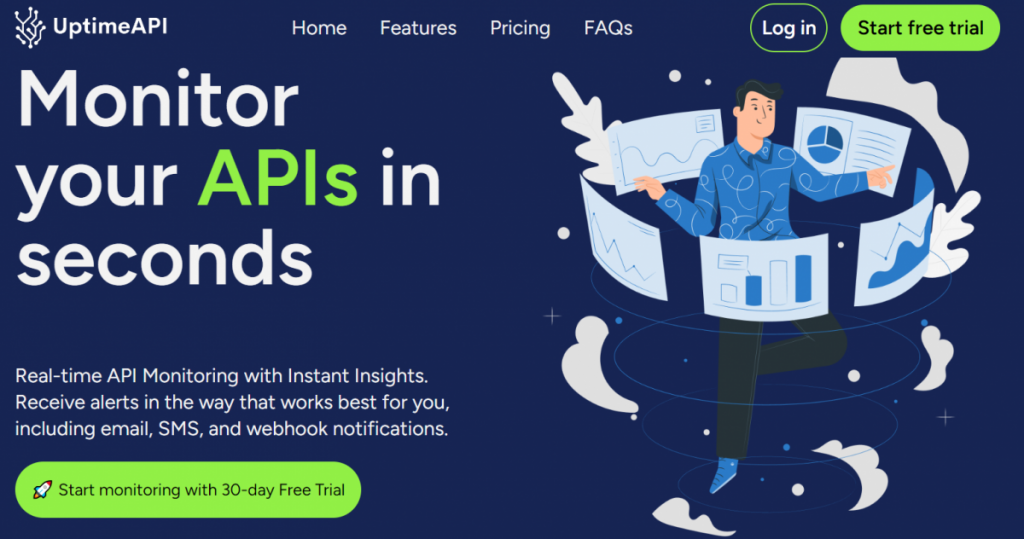In the ever-evolving landscape of software development, maintaining the health and reliability of your APIs is a non-negotiable aspect. As developers, we understand the critical importance of ensuring our APIs are robust and performing optimally. Enter UptimeAPI – a game-changer in the realm of API health check. In this quick guide, we’ll explore the key features of UptimeAPI and provide developers with insights into what the API response entails.
Why API Health Checks Matter:

APIs are the backbone of modern applications, facilitating seamless communication between different software components. The health of an API directly impacts the overall functionality and user experience of an application. API health checks play a pivotal role in proactively monitoring and ensuring the well-being of these crucial components.
For developers, conducting regular API health checks is akin to preventive maintenance – it helps identify potential issues before they escalate, reducing downtimes and ensuring a smoother user experience.
Introducing UptimeAPI:
UptimeAPI is not just an API health check tool; it’s a comprehensive solution designed with developers in mind. Here’s a quick rundown of what makes UptimeAPI stand out:
User-Friendly Interface:
- UptimeAPI boasts an intuitive and user-friendly interface, making it easy for developers to set up and manage their API health checks. Whether you’re a seasoned developer or just starting, UptimeAPI simplifies the monitoring process.
Quick and Easy Setup:
- Developers value efficiency, and UptimeAPI delivers just that. With a straightforward setup process, you can start monitoring your APIs in no time. UptimeAPI’s quick activation ensures that you spend more time developing and less time configuring.
Real-Time Monitoring:
- Stay on top of your API’s performance with UptimeAPI’s real-time monitoring. Receive instant alerts and notifications when issues arise, enabling you to address them promptly and maintain a high level of reliability.
Customizable Health Checks:
- UptimeAPI recognizes that every API is unique. Tailor your health checks according to your specific requirements – adjust parameters such as request frequency, timeout thresholds, and the expected response type.
Decoding the UptimeAPI API Response:

Understanding the API response is fundamental to effective troubleshooting and optimization. When UptimeAPI performs a health check, the API response includes several key elements:
HTTP Status Codes:
- The HTTP status code is a fundamental part of the API response, indicating the success or failure of the request. A 2xx status code signifies success, while 4xx or 5xx codes indicate errors that require attention.
Response Time:
- UptimeAPI measures the time taken for your API to respond. Monitoring response times is crucial for identifying potential performance bottlenecks and ensuring optimal user experiences.
Error Details:
- In the event of errors, UptimeAPI provides detailed error information. This includes error messages and codes, aiding developers in quickly pinpointing and addressing issues.
Headers and Payload:
- The API response includes headers and payload data, offering insights into the server configuration, supported content types, and the structure of the returned data. This information is valuable for understanding your API’s behavior.
Conclusion:
For developers seeking a reliable and developer-friendly solution for API health checks, UptimeAPI emerges as a top contender. Its intuitive interface, quick setup, real-time monitoring, and customizable health checks make it an indispensable tool in the developer toolkit.
As you navigate the intricacies of API development, consider incorporating UptimeAPI into your workflow. Elevate your API monitoring experience and empower yourself with the tools needed to ensure the optimal performance and reliability of your APIs. With UptimeAPI, API health checks become not just a necessity but a seamless and efficient part of your development process.
Read More: Company profile APIUsage Cases

